The vibrant colors of crimson, emerald, and golden yellow peppers hanging in your garden, each one bursting with the promise of heat and flavor. A passionate chef looking to spice up your dishes or a gardening enthusiast eager to cultivate your own homegrown bounty, grow and preserve chili peppers offer an exhilarating journey from seed to harvest.
A countless varieties ranging from mild to fiery hot, these dynamic little fruits are not only versatile in the kitchen but also packed with health benefits that can elevate any meal.
What kind of Chili Peppers to Grow?
The Scoville Heat Scale serves not just as a measure of spiciness but also as a fascinating window into the diversity of hot peppers. Each variety brings its unique flavor profile along with its heat, which can be influenced by factors such as soil quality, weather conditions, and even ripeness at harvest time.
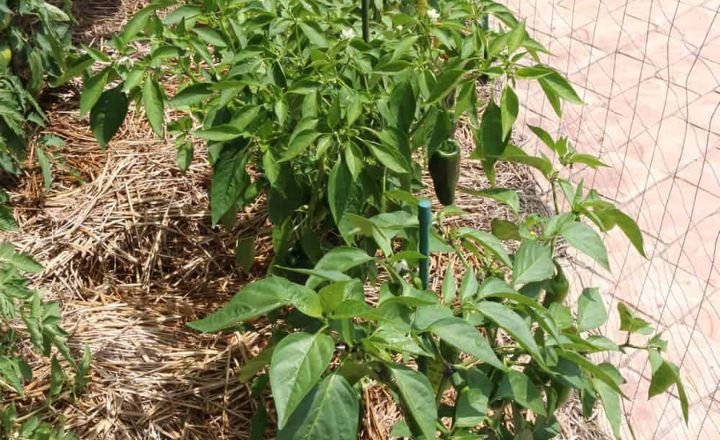
For instance, while jalapeños might typically range between 3,000 to 6,000 SHU, a particularly sunny summer could yield fruits with notably higher heat levels due to increased capsaicin production in response to stress.
Exploring the extreme end of the scale leads us to the Jolokia or Ghost pepper. It once earned fame for surpassing one million SHU an almost unimaginable level of heat it also offers an intriguing complexity that aficionados seek.
The dynamic interplay between sweetness and ferocious heat captures the essence of culinary adventure each bite transports you beyond mere spice into realms defined by cultures and traditions.
- sweet pepper = 0 unit
- pepperoncini = 100 – 500 units
- pasilla = 1,000 – 1,500 units
- rocotillo = 1,500 – 2,500 units
- jalapeno = 2,500 – 5,000 units
- wax = 5,000 – 10,000 units
- vserano = 10,000 – 23,000 units
- cayenne pepper, tabasco, guntur chili – 30,000 – 50,000 units
- red savina habanero = 360,000 – 500,000 units
- naga viper, infinity chili – 855,000 – 1,500,000 units
Chili Peppers Species We Plant The Most
Capsicum Annuum : The Capsicum annuum species stands as the most common type of chili pepper cultivated globally, with its versatility making it a staple in kitchens worldwide. Renowned for its varieties, this species encompasses everything from sweet bell peppers to the sassy jalapeño, capturing culinary imaginations from tacos to stir-fries.
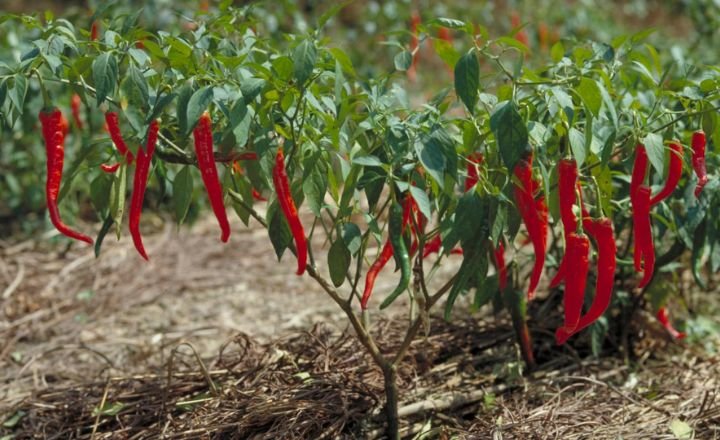
The allure of red and green peppers lies not only in their vibrant colors but also in their rich flavors, which transform dishes while providing essential vitamins and antioxidants.
Capsicum Frutescens : The species thrives under the sun’s nurturing embrace, flourishing in bright light conditions that coax out its unique characteristics. Its abundant low shrub form creates a lush tapestry of green and vibrant color, providing a perfect backdrop for the remarkable fruit it bears.
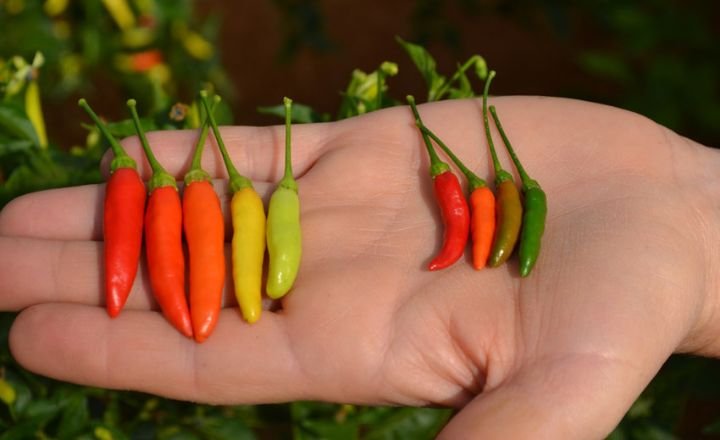
Each pepper follows a beautiful metamorphosis from innocuous green to fiery red or orange, signaling the intense heat concealed within. Tabasco and Bird’s Eye peppers stand as proud representatives of this species, known not just for their piquancy but also for their culinary versatility around the world.
Capsicum Baccatum: The Aji variety of pepper stands out not only for its unique flavor but also for its fascinating adaptability. Unlike many pepper plants that thrive in warm, humid conditions, the Aji prefers cooler temperatures and a drier climate, making it an intriguing choice for gardeners looking to diversify their crops.
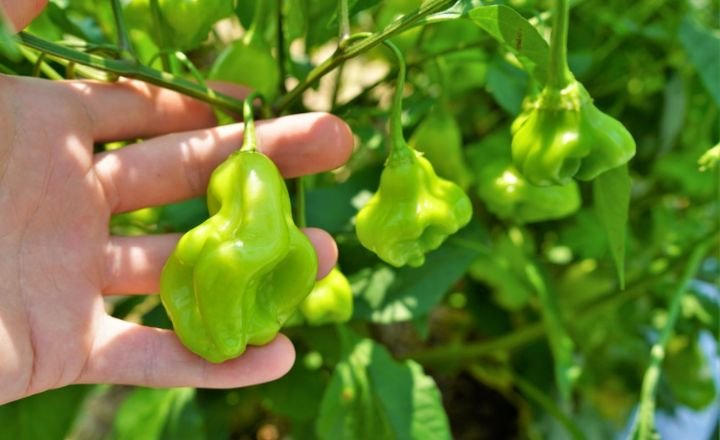
This distinctive preference may stem from its native habitats in the Andean regions, where cooler nights contribute to a complex flavor profile that can be both fruity and fiery.
Capsicum Chinense: The Habanero pepper, renowned for its intense heat and rich flavor, stands out not only for its blistering Scoville ratings but also for its unique cultivation preferences. The broad, lush leaves that provide ample shade, this fiery fruit thrives in environments where moisture is plentiful.
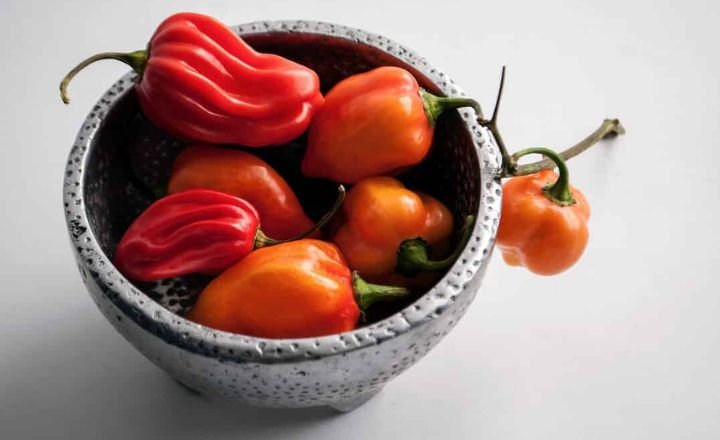
Unlike many other peppers that bask in the sun, Habaneros flourish under a canopy of greenery, drawing on humidity to enhance their vibrant flavor profile. This affinity for shade creates an enchanting paradox while they require less direct sunlight, they yield some of the most deliciously potent fruits on the planet.
Capsicum Pubescens: The Rocoto, often celebrated as the gem of South American cuisine, offers a unique blend of allure and intrigue. Its leaves are not only distinctive in shape but also contribute to the plant’s overall aesthetic, making it a striking addition to any garden or culinary landscape.
Its black seeds mature, they hint at the rich flavors waiting to burst forth from these vibrant fruits. The Rocoto’s thick and fleshy peppers pack a punch that surprises even seasoned chili enthusiasts; their sweetness is often mistaken for mildness before they unleash their fiery essence.
How to Grow and Preserve Chili Peppers?
A considering how to grow chili peppers, the first step is understanding their love for warmth and sunlight. Unlike many garden staples that thrive in cooler climes, hot peppers are natives of tropical and subtropical regions.
Their germination can require patience often taking two weeks or longer as they soak up every bit of heat to kickstart their growth cycle.
Interestingly, research indicates that the hotter the pepper variety, such as Carolina Reaper or Ghost Pepper, the longer it typically takes for seeds to sprout and plants to mature. This phenomenon ties directly into the plant’s natural adaptation; these varieties have evolved not just to survive but thrive in conditions where other crops might falter.
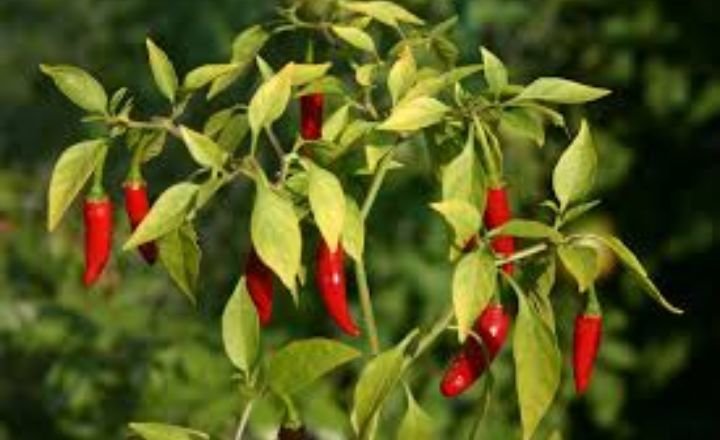
To successfully cultivate these fiery delights in your home garden, start by creating an ideal microclimate. Using seedling heat mats can shorten germination times significantly while providing consistent warmth a critical factor when nurturing temperature-sensitive plants like chilies.
Once seedlings emerge, maintain warm temperatures and bright light levels continue throughout their growth stages; think about utilizing a greenhouse or indoor lights if outside weather remains unpredictable.
- Temperatures between 77 and 86 (90) °F are required for germination success.
- Seed germination ranges between 70% and 80% under ideal conditions. The more ideal conditions you give, the better the germination you will have. If the substrate temperature is around 70 °F, the germination period is extended.
- Seed germination lasts between 5 and 30 days, depending on the variety of hot peppers, but even seeds of the same variety do not germinate at the same time. Also, the temperature is one of the factors affecting the uniformity of germination of the seeds of hot peppers and other plants. If the temperature of the air and the substrate throughout the germination period is constant (with little variation, of course), the peppers will germinate more evenly.
- Successful cultivation and yield require that nighttime temperatures do not fall below 50 °F.
How To Prepare The Seeds Of Hot Peppers Before Sowing
Soaking hot pepper seeds in water or chamomile tea is a practical step that not only helps soften their tough outer shell but also creates an optimal environment for germination. Chamomile tea, with its gentle antiseptic properties, serves as a natural disinfectant protecting your precious seeds from harmful pathogens like fungi and bacteria.
This dual benefit not only increases the chances of successful sprouting but also safeguards seedlings during their vulnerable early stages.
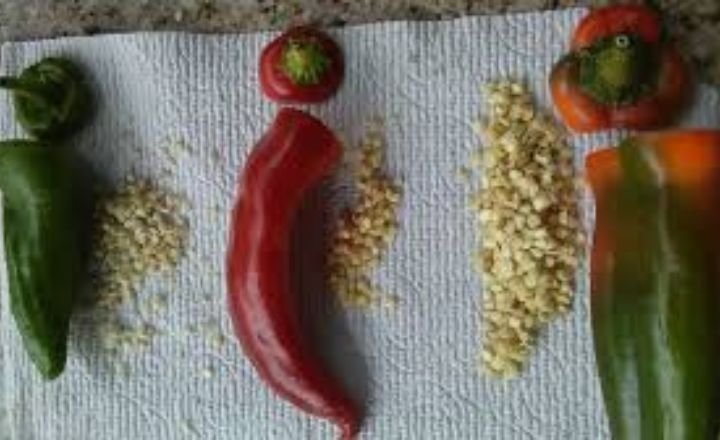
For those curious about alternative disinfection methods, potassium permanganate can be a powerful ally when used correctly. A quick 20-minute soak in a diluted solution can enhance seed vitality by softening the hard outer layer, leading to quicker germination rates.
A caution is advised; ensure you rinse the seeds thoroughly afterward to remove any chemical residues before they meet soil for the first time.
Sowing Chili Peppers In Pots Or Containers
Preparing the right container for sowing chili pepper seeds is crucial to your success in growing these vibrant plants. A Styrofoam seedling containers are fantastic for those looking to plant a larger batch, don’t underestimate the utility of repurposed household items like yogurt cups or mugs.
These options not only minimize waste but also offer an opportunity to add a personal touch to your gardening experience. A choose your pots, ensure they have adequate drainage holes; this simple precaution will help avoid waterlogged soil that can hamper root development.
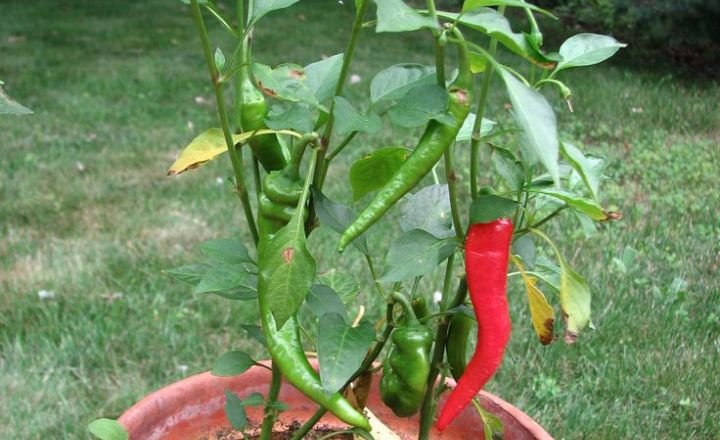
When it comes to selecting the substrate, opting for commercially available sterilized soil gives your seeds the best chance at thriving by eliminating potential threats from weeds and pests.
Covering the seeds with just a few millimeters of soil is essential; too thick a layer can prevent them from breaking through to sunlight as they germinate. A waiting for sprouts, maintaining consistent warmth is vital exploit creative warm spots around your home, like atop electronic devices that generate heat, but keep an eye on temperatures to protect seedlings from overheating.
The patience is key in this process; some varieties may take longer than others to sprout, so check each day and resist the temptation to rush them into light before they’re ready.
Substrate Selection
Using a universal vegetable transplant substrate is a game-changer for anyone looking to grow robust chili peppers. These substrates come in various formulations, such as universal mixed vegetable substrate or tomato and pepper substrate, all designed to provide an ideal environment for your plants.
The secret lies in their balanced composition, which fosters healthy root development while ensuring that crucial nutrients are easily accessible to your burgeoning seedlings.
Good drainage is a fundamental aspect often overlooked by novice gardeners it plays a critical role in preventing water from pooling around the roots. The working with these specialized substrates, you enhance aeration and moisture retention simultaneously.
This balance not only reduces the risk of root rot but also allows chili pepper plants to thrive drawing out essential nutrients when they need them most.
Pinching Chili Peppers
Pinching is a vital technique in the journey of how to grow chili peppers, allowing gardeners to direct the plant’s energy toward producing more robust stems and ample fruit. This process involves removing the small sprouts that emerge between the main stem and leaf nodes often referred to as suckers.
A eliminating these excess sprouts, you’re essentially sending a message to your pepper plants: channel your resources into thriving instead of spreading thin.
Harvesting Chili Peppers
Cutting chili peppers with scissors is a surprisingly effective technique for maintaining the health of your plants. This method helps prevent damage to the delicate branches, allowing your pepper plants to thrive and produce more fruits over time.
The harvest them mature or immature, both stages have exciting culinary uses; unripe fruits bring a fresh crunch and juiciness ideal for salads or quick pickles, while ripe varieties burst with fragrant flavor that enhances sauces and salsas.
Regularly picking chili peppers not only boosts your harvest but also stimulates the plant to generate new flowers, ensuring a continuous supply throughout the season.
A preserving the joy of growing these spicy gems year after year, saving seeds from fully ripened fruits is crucial. A selecting seeds, look for brightly colored skins think vibrant reds or sunny yellows which signal that the seeds inside are ready for next season’s sowing adventure.
A well-timed harvest can lead not only to delicious meals today but also a thriving garden tomorrow.
How to dry Chili Peppers
Drying chili peppers not only extends their shelf life but also intensifies their flavor, transforming them into a vibrant spice that can elevate any dish.
Think of dried peppers as a pantry gem; their concentrated sweetness and heat can add depth to sauces, stews, and marinades. One unique method to enhance the drying process is by grouping various chili pepper varieties on your thread this not only creates an eye-catching display (perfect for decor) but also allows different flavors to meld together during drying.
The sun and heat are essential elements for successful drying, creating a proper environment is equally crucial. A more humid area, consider using an airy space that receives ample sunlight rather than relying solely on natural sunlight exposure.
Some people even use screens or racks set up near windows to optimize airflow while keeping unwanted pests at bay. A experiment with different drying methods from hanging to using dehydrators you’ll discover that patience plays a vital role because each variety dries differently, providing you with delightful surprises along the way.
Chili Peppers Storage
Chili peppers are more than just a spicy addition to your meals; they can revolutionize your culinary creations when transformed into various condiments. Consider enriching your pantry with ajvar, pindjur, and Satara each offering unique flavors that complement the heat of those vibrant peppers.
Mixing chili peppers into ketchup adds an unexpected kick, turning a classic condiment into something extraordinary. For fresh salads, chopped ripe or green chili peppers not only enhance the flavor profile but also introduce a colorful crunch that elevates any dish.
A abundance of chili peppers during harvest season, don’t let them go to waste! Freezing excess fruits is a fantastic way to preserve their fiery goodness for future culinary adventures. They can be frozen individually or mixed with common varieties for diverse flavors throughout the year.
Alternatively, air-drying or using an oven at low temperatures allows you to create your dried pepper stash perfect for homemade spice blends and sauces like tabasco that will elevate your cooking game in new ways.
Diseases And Parasites
A cultivating chili peppers, providing optimal growing conditions is key to minimizing the risk of diseases and pests. These resilient plants thrive in well drained soil rich in organic matter, which not only nourishes their roots but also helps prevent waterlogged conditions that can lead to rot of leaves and stems.
To keep your chili pepper plants happy and healthy, maintain a consistent watering schedule without overwatering opt for deep watering methods that encourage deeper root growth while ensuring excess moisture drains away.
Interesting Facts About Chili Peppers
Chili peppers have transcended their origins in Mexico, evolving from ornamental treasures to essential kitchen staples embraced across the globe. A burst onto the culinary scene, these vibrant fruits found a new home in diverse flavors and recipes from Cajun gumbo in Louisiana to zesty salsas in California.
Cultivating your own chili peppers can be an incredibly rewarding endeavor; with the right conditions—think sunny spots and well-draining soil you can transform any backyard into a mini spice garden.
The journey of chili peppers is not just one of agricultural adaptation but also cultural exchange.
The dabbling in various growing techniques, such as companion planting or using raised beds, you can replicate some of the optimal conditions that allow these fiery wonders to thrive.
Some Chili Peppers Cooking Recipes
Mexican cuisine embodies a vibrant tapestry of flavors, and among its most beloved dishes are the Beef, Cheese, and Chili Enchiladas. These delectable treats exemplify the heart of Mexican cooking, showcasing how essential tortillas serve as a canvas for rich fillings like tender beef and zesty salsa verde.
The baked to perfection under a blanket of melted cheese, they become an irresistible comfort food a dish that not only warms the body but also brings warmth to gatherings, whether at festive family celebrations or cozy dinners.
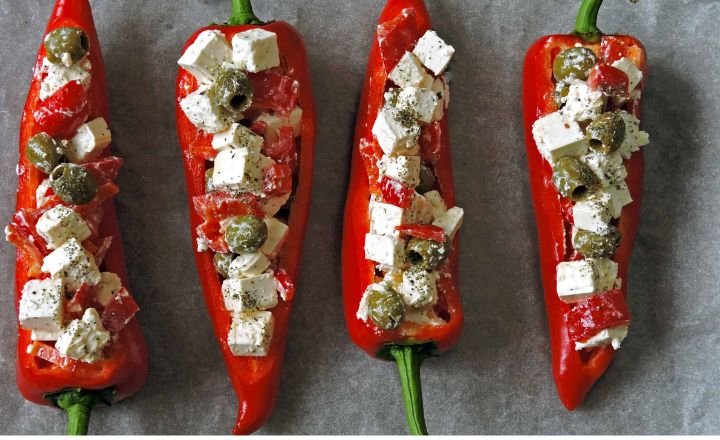
The enjoy cultivating your own ingredients for such culinary adventures, consider growing chili peppers at home; they’re not only easy to maintain but also enhance your dishes with fresh-from-the-garden spice.
Equally enticing is the fusion of cultures in Jamie Oliver’s falafel-stuffed tortillas topped with harissa chili sauce, illustrating how culinary borders can blend beautifully.
This innovative spin on traditional Middle Eastern fare brings forward textures and flavors that awaken the palate—a true testament to global gastronomy’s infinite possibilities.
For those who crave heat in their meals, the sizzling Fajitas spiced with coriander and lime deliver an exhilarating kick alongside smoky overtones from multiple types of chilies; serving suggestions like avocado or a dollop of sour cream provide perfect counterbalance.
Summary
A successfully Grow and Preserve Chili Peppers is a rewarding endeavor that can enhance your culinary experiences and help you stock your pantry with vibrant flavors. A selecting the right varieties, providing optimal care, and utilizing effective preservation methods like drying or pickling, you can enjoy your homegrown peppers year-round.
A growing and preserving chili peppers can be a rewarding endeavor that enhances both your culinary repertoire and gardening skills. The selecting the right varieties, providing optimal care, and employing preservation techniques like drying or pickling, you can enjoy the vibrant flavors of your homegrown peppers year-round.
